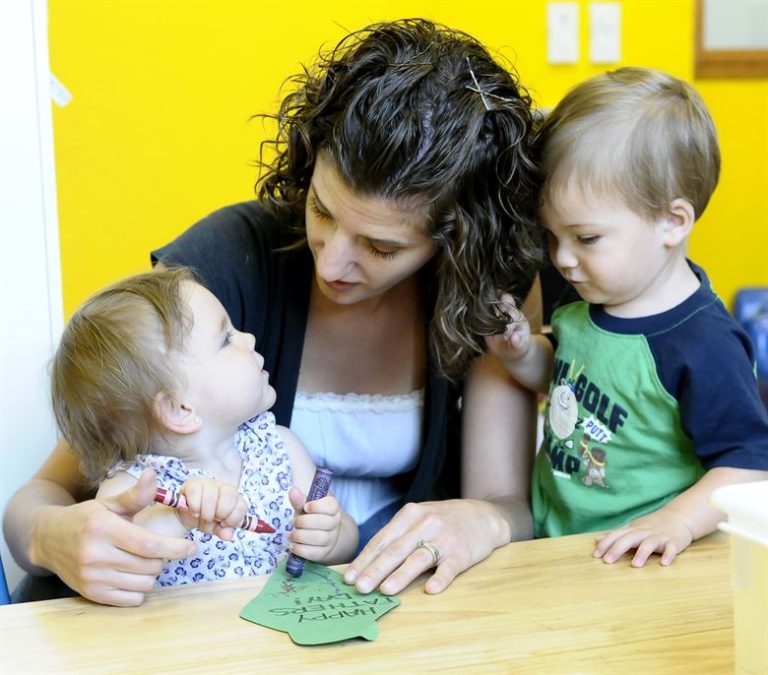Classroom Practices During COVID-19
Note: This is an opinion piece only whose goal is to start a conversation. I am not a medical professional nor a COVID Researcher.
Recently I’ve been asked numerous questions about practices within ECE classrooms and the COVID-19 pandemic. Questions have included some of the following:
- Should we let children play together or separate them?
- Am I allowed to hug the children?
- Should we sing at group time?
- How should greetings be handled?
These are all great questions. I’m certainly not a medical professional or a researcher on COVID, but here is my personal take on questions such as this. I like to think about this with a three-step approach.
1. Adhere to your state guidelines and mandates and/or district or center guidelines/mandates.
Above all else, be sure that you are implementing and responding to all of the state-mandated guidelines. This should be the first step in deciding about any specific practice within the classroom. If there are no specific guidelines or mandates, then proceed to step two.
2. Evaluate your personal comfort level.
As early care professionals, we have to take care of ourselves. If you do not put your own health (physical and mental) first, you won’t have anything left to give. The evaluation of personal comfort may vary from teacher to teacher within the same center, and that’s ok. During this unusual time, it’s ok for things to be a little different. Ask yourself these questions, and be honest about your answers:
- Is the practice something that I really think should be eliminated for the time being? What about the practice causes the strong feelings for you?
- Is this something that I feel is putting me at a risk level I’m not comfortable with?
- Am I adding unnecessary stress for myself by implementing this practice?
- Are there other factors that apply to me (but maybe not others) that make me uncomfortable with this practice for the time being?
If you answer yes to these questions, then it’s important to consider whether it’s worth the risk to you (physically or mentally). Remember, we all have different reactions to this pandemic. We all have different levels of concern. And that’s ok. Make the decision that is right for you in this moment. Research around this pandemic changes from day to day. If the decision you make today feels right, and in a few weeks no longer feels right, it’s ok to make a different decision. In a nutshell, every teacher will need to assess how comfortable they are being in a classroom to begin with and will have the heavy decision of weighing personal risk against good practice. That’s an individual decision that I don’t think anyone else can/should monitor.
3. Consider what children need for healthy development and what best practice indicates.
Child development and children’s needs do not change just because we are in the middle of a pandemic. To the extent that the teacher is comfortable, it is still important to provide children with the opportunities to develop holistically. Children still need opportunities to interact with both other children and adults. They need opportunities to practice their social skills and pro-social behaviors. They need hugs and touch from adults they have relationships with. They need solid, educational materials to interact with directly because we know children learn through play with hands-on materials. They need to be read to by caring adults. The list goes on and on. Remember that the state guidelines for early childhood are typically slightly different than the guidelines for school-agers because their development is different.
One of my fellow early childhood colleagues, Rachel McDonough, gave this advice:
“The goal is to try to provide as normal an experience as you can while still mitigating risk to the extent that you can. It’s impossible to complete eliminate any risk, and I think that parents understand that when they send their children to us. We are all doing so many things to ensure that children who are entering the building are healthy. I think that singing and reading in small groups is important, and it’s important to build those healthy relationships with children. The focus needs to be on having really good experiences with children and building relationships with them and to not have the pressure on us to eliminate ALL risk.”
We cannot eliminate all risk. We can mitigate to the best of our abilities. Centers are checking children for symptoms upon entering and cleaning and sanitizing as best we can to minimize the risk. We cannot eliminate all practices that we know are healthy for children. I don’t think any teacher should put added stress on him/herself because of a particular practice. The teacher’s mental health is important during this stressful time. I think Rachel said it beautifully. Honor the state guidelines, honor yourself, and respect the choices of others.







